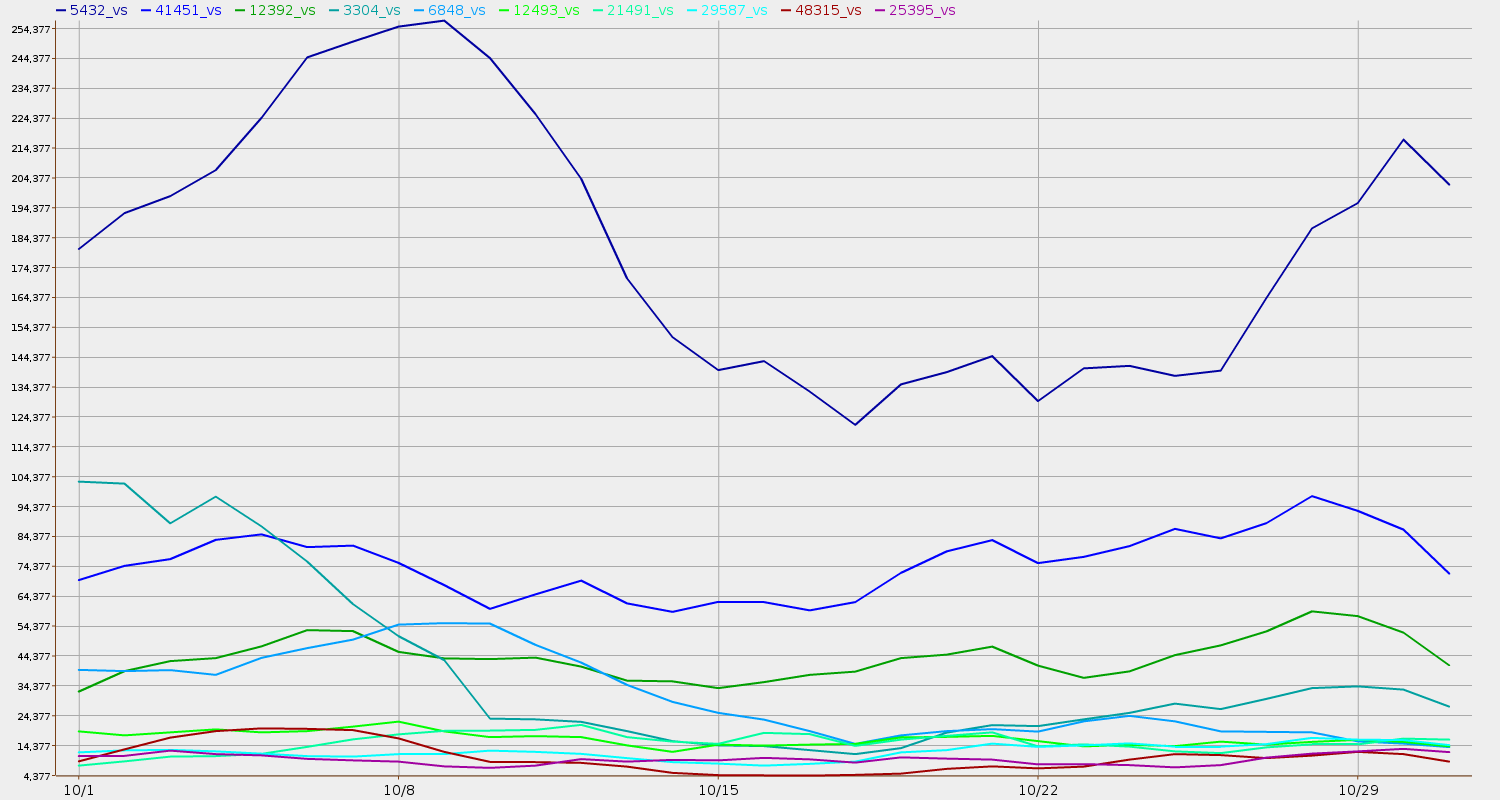 Data storage issues led to loss of some incoming data for the September 2012
SpamRankings.net.
Interestingly, the results seem almost normal anyway.
Here is a speculation on why that can be.
Data storage issues led to loss of some incoming data for the September 2012
SpamRankings.net.
Interestingly, the results seem almost normal anyway.
Here is a speculation on why that can be.
Look just under any rankings chart for September 2012 and you’ll see this notice:
CBL dropouts 8,11 September 2012 were on our end.
PSBL data is unusable 4-15 Sep 2012 due to problems on our end.
| 1 | (2) | AS 9829 BSNL-NIB |  IN IN |
| 2 | (1) | AS 25019 SAUDINETSTC-AS |  SA SA |
| 3 | (5) | AS 6147 SAA |  PE PE |
| 4 | (3) | AS 8386 KOCNET |  TR TR |
| 5 | (4) | AS 7643 VNPT-AS-VN |  VN VN |
| 6 | (-) | AS 9050 ROMTELECOM |  RO RO |
The source of the problem was embarassingly simple and easily fixed: not enough inodes. The CBL and PSBL data were affected differently because they arrive differently. We pick up from CBL daily a text summary table with a line per IP address. We get from PSBL an NNTP feed of spam messages, each in its own file, that we boil down to a summary. So for CBL, we either got the whole file (most days of the month), or we didn’t store it at all (8 and 11 September). For PSBL, for each incoming message, we either stored it or we didn’t. Which is why there are some days with PSBL data between 4 and 15 Sep, but the volume is lower than usual. The notice below the chart is dire because we prefer to be conservative about these things.
Yet the PSBL rankings show AS 9829 BSNL-NIB #1 worldwide just like Continue reading


